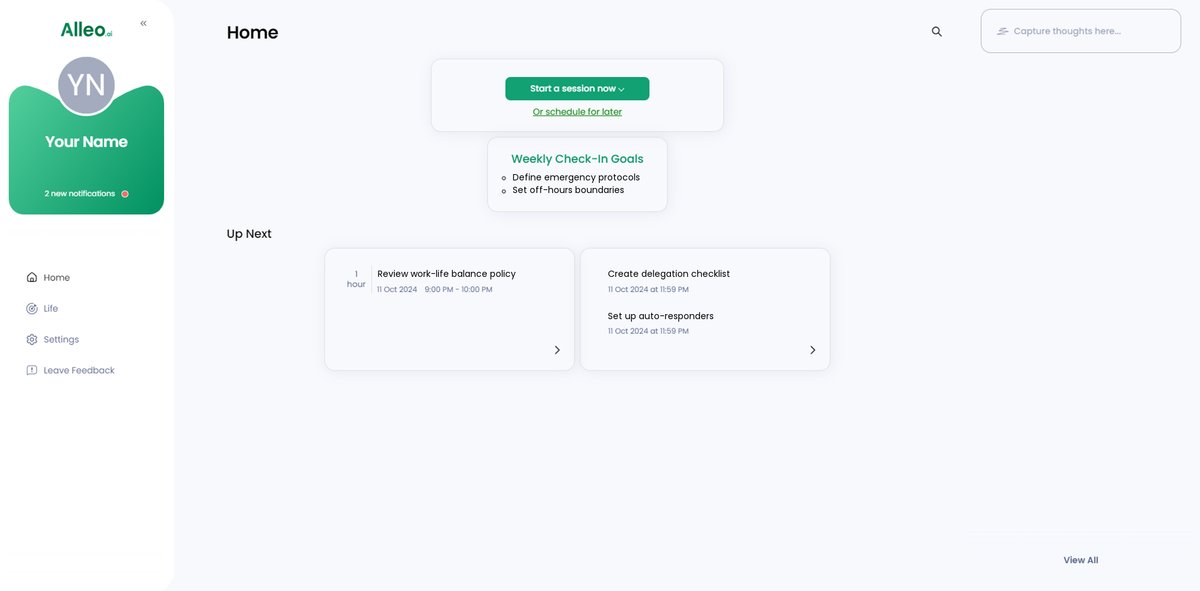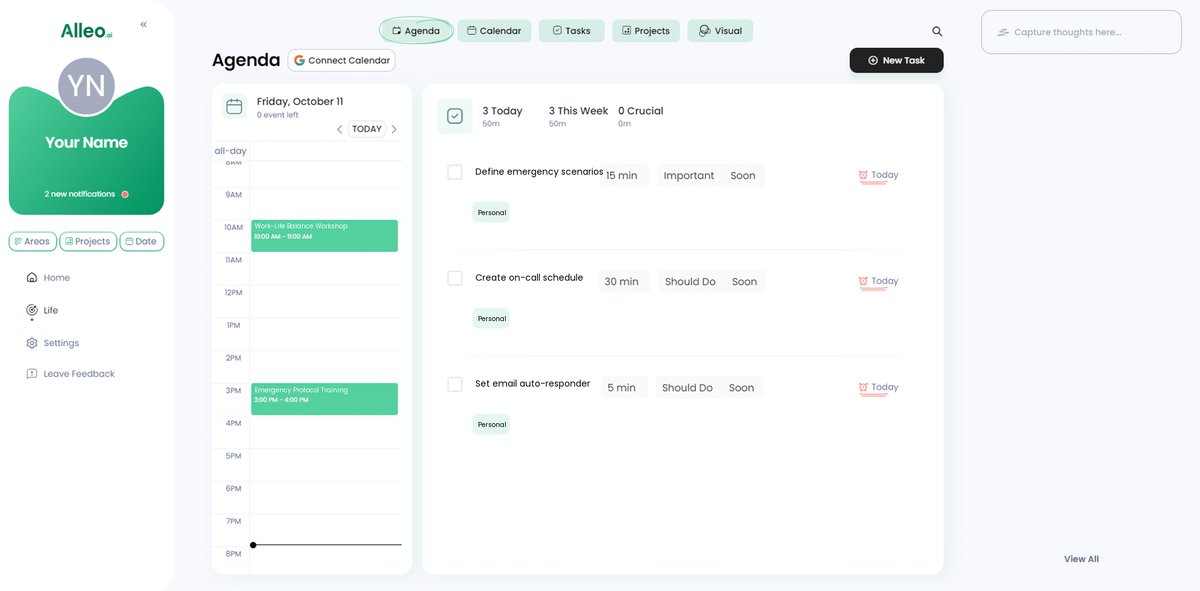The Ultimate Guide: How to Set Boundaries for Work Emergencies as a Manager
Are you overwhelmed by constant work emergencies that invade your personal time? Managing work emergencies effectively is crucial for maintaining a healthy work-life balance for managers.
As a life coach, I’ve helped many professionals navigate these challenges. I understand the toll this can take on your well-being and the importance of stress management for managers.
In this article, you’ll learn five key strategies to set boundaries for work emergencies. These tactics will help you reclaim your time and maintain a healthy work environment. You’ll discover effective communication with employees and how to establish clear job responsibilities.
Let’s dive in to explore prioritizing work tasks and managing employee expectations.

The Toll of Constant Work Emergencies
It’s not just exhausting; it’s unsustainable. Constant work-related interruptions can significantly affect your mental health and productivity. Managing work emergencies effectively is crucial for maintaining a healthy work-life balance for managers.
Many clients struggle with feeling overwhelmed by unending “urgent” tasks, making it hard to switch off and recharge. Effective communication with employees and establishing clear job responsibilities can help in prioritizing work tasks.
In my experience, people often find that a lack of boundaries leads to burnout. This is especially true for recruiters who can’t take uninterrupted time off. Implementing emergency response protocols and delegating responsibilities can alleviate this issue.
The constant pressure to be available 24/7 drains energy and diminishes job satisfaction. Stress management for managers is essential in creating a healthy work environment.
We all need effective workload prioritization and emergency management to maintain a healthy work-life balance. Without it, you risk not only your well-being but also your overall performance. Establishing after-hours communication policies can aid in managing work emergencies effectively.

Strategic Solutions for Managing Work Emergencies Effectively
Overcoming this challenge of managing work emergencies effectively requires a few key steps. Here are the main areas to focus on to make progress:
- Define clear emergency response protocols: Outline specific scenarios and actions to handle them efficiently, prioritizing work tasks.
- Establish on-call rotation for managers: Rotate responsibilities to avoid burnout and promote stress management for managers.
- Delegate responsibilities to trusted team members: Empower select employees to manage emergencies, establishing clear job responsibilities.
- Set communication expectations for off-hours: Clearly define after-hours communication policies for effective communication with employees.
- Implement a work-life balance policy: Create policies that promote mental health, flexibility, and a healthy work environment, managing employee expectations.
Let’s dive in to explore these strategies for managing work emergencies effectively!
1: Define clear emergency response protocols
Defining clear emergency response protocols is crucial to managing work emergencies effectively.
Actionable Steps:
- Create a detailed emergency response document outlining specific scenarios and corresponding actions for managing work emergencies effectively.
- Train all team members on these protocols through regular workshops and simulations, focusing on effective communication with employees.
- Schedule quarterly review meetings to update the protocols based on feedback and changing circumstances, ensuring clear job responsibilities.
Explanation: Defining clear emergency response protocols ensures everyone knows their role during a crisis, reducing uncertainty and stress.
Regular training and reviews keep the team prepared for any situation. This structure helps you maintain a healthy work-life balance for managers and manage emergencies efficiently.
For more insights, see how FEMA emphasizes the importance of planning.
Key benefits of clear emergency response protocols include:
- Reduced response time during crises
- Improved team coordination and delegating responsibilities
- Increased confidence in handling emergencies and managing employee expectations
These steps will help you develop a robust emergency response system, allowing you to handle crises without compromising your personal time, contributing to stress management for managers and creating a healthy work environment.

2: Establish on-call rotation for managers
Establishing an on-call rotation for managers is crucial to managing work emergencies effectively and preventing burnout while ensuring continuous coverage.
Actionable Steps:
- Develop a fair and transparent on-call schedule that rotates responsibility among managers, promoting work-life balance for managers. Use scheduling software to automate the process.
- Clearly communicate the on-call schedule to all employees and ensure they understand who to contact during emergencies, enhancing effective communication with employees. Post the schedule in common areas and online platforms.
- Provide managers with incentives or compensations for their on-call duties, supporting stress management for managers. Offer additional PTO days or bonuses.
Explanation: Implementing an on-call rotation helps distribute the workload evenly, preventing manager burnout and establishing clear job responsibilities.
Clear communication of the schedule ensures everyone knows who is responsible during emergencies, supporting effective emergency response protocols. For more insights, see how Coursera highlights the importance of setting boundaries to avoid burnout.
This approach will help you maintain a healthy work environment and ensure effective emergency management without overburdening any single manager, while managing employee expectations.

3: Delegate responsibilities to trusted team members
Delegating responsibilities to trusted team members is essential for managing work emergencies effectively without compromising your well-being.
Actionable Steps:
- Identify and train reliable team members: Choose team members who can handle emergencies in your absence. Develop a mentorship program to build their skills and establish clear job responsibilities.
- Establish a clear delegation process: Create guidelines and checklists for delegation. Use project management tools to monitor tasks and prioritize work tasks.
- Empower team members with decision-making authority: Allow them to make decisions for predefined scenarios. Conduct workshops to boost their confidence and improve effective communication with employees.
Explanation: Delegating responsibilities ensures that work emergencies are managed effectively, even when you’re not available. This approach reduces stress and promotes a healthier work-life balance for managers.
For further reading, see how Business Insider highlights the importance of setting boundaries to avoid burnout.
Key aspects of effective delegation:
- Clear communication of expectations and emergency response protocols
- Regular check-ins and feedback for managing employee expectations
- Gradual increase in responsibility to create a healthy work environment
These steps will help you create a supportive team environment that can manage work emergencies effectively while maintaining stress management for managers.

4: Set communication expectations for off-hours
Setting communication expectations for off-hours is crucial to maintaining a healthy work-life balance and managing work emergencies effectively. After-hours communication policies play a vital role in creating a healthy work environment.
Actionable Steps:
- Define and communicate specific off-hour communication policies: Use internal newsletters and meetings to ensure everyone is informed about emergency response protocols.
- Set up automated responses and status updates during off-hours: Implement tools like email auto-responders and calendar notifications to aid in effective communication with employees.
- Encourage a culture of respect for off-hours and lead by example: Share success stories of managers who adhere to these boundaries, promoting work-life balance for managers.
Explanation: Establishing clear off-hour communication policies helps prevent burnout and ensures that everyone knows what to expect when managing work emergencies effectively.
This approach aligns with current industry trends emphasizing the importance of work-life balance and stress management for managers.
For more information, see how Coursera highlights setting boundaries to avoid burnout.
This strategy will help you maintain a healthier balance while ensuring effective emergency management and prioritizing work tasks.
5: Implement a work-life balance policy
Implementing a work-life balance policy is essential for preventing burnout and promoting overall well-being, which is crucial when managing work emergencies effectively.
Actionable Steps:
- Develop a comprehensive policy: Create a policy that includes flexible working hours, mental health days, and emergency response protocols. Consult with HR to align it with company values and establish clear job responsibilities.
- Promote the policy through internal campaigns: Use visual aids like posters and digital banners to keep the policy top-of-mind. Regularly remind employees of its benefits, including stress management for managers and effective communication with employees.
- Monitor and evaluate effectiveness: Conduct annual surveys to gather employee feedback and adjust the policy as needed. Use performance metrics to track improvements in work-life balance for managers and their teams.
Key components of an effective work-life balance policy:
- Flexible working arrangements
- Mental health support resources
- Regular review and adjustment processes
Explanation: Establishing a work-life balance policy helps create a supportive work environment that prioritizes mental health and flexibility, essential for managing work emergencies effectively.
This approach aligns with industry trends emphasizing the importance of maintaining healthy boundaries, prioritizing work tasks, and delegating responsibilities.
For more insights, see how HSE Network highlights workplace wellness and the right to disconnect.
Taking these steps will help foster a healthier, more productive workplace, improving the ability to manage employee expectations and create a healthy work environment.
Partner with Alleo to Set Boundaries for Work Emergencies
We’ve explored the challenges of managing work emergencies effectively and maintaining a healthy work-life balance for managers. Did you know you can work directly with Alleo to make this journey easier and faster?
Setting up an account with Alleo is quick and simple. Once you’ve registered, you can create a personalized plan tailored to your needs for managing work emergencies effectively.
Alleo’s AI coach will guide you through the process, offering full coaching sessions just like a human coach, focusing on effective communication with employees and establishing clear job responsibilities.
Alleo will help you define emergency response protocols, set up on-call rotations, and establish communication expectations. The coach will follow up on your progress and handle any changes, assisting with prioritizing work tasks and delegating responsibilities.
You’ll receive reminders and notifications to keep you on track with managing work emergencies effectively and creating a healthy work environment.
Ready to get started for free? Let me show you how to improve your stress management for managers and implement after-hours communication policies!
Step 1: Log In or Create Your Account
To start setting boundaries for work emergencies with Alleo’s AI coach, Log in to your account or create a new one in just a few clicks.

Step 2: Choose Your Goal – Improving Overall Well-being and Life Satisfaction
Select “Improving overall well-being and life satisfaction” as your goal to address the work-life balance challenges highlighted in the article, helping you develop strategies to manage work emergencies while prioritizing your personal time and mental health.

Step 3: Select “Personal” as Your Focus Area
Choose “Personal” as your focus area to address work-life balance and set boundaries for work emergencies, allowing you to reclaim your personal time and reduce stress.

Step 4: Starting a coaching session
Begin your journey with Alleo by scheduling an intake session, where you’ll discuss your work-life balance challenges and set up a personalized plan to manage work emergencies more effectively.

Step 5: Viewing and managing goals after the session
After your coaching session with Alleo’s AI coach, you can easily view and manage the goals you discussed by checking the home page of the app, where they will be displayed for your reference and tracking.

Step 6: Adding events to your calendar or app
Use Alleo’s calendar and task features to schedule and track your progress on implementing work-life balance strategies, such as setting up on-call rotations or defining emergency protocols, helping you stay accountable and manage your time effectively.

Take Control of Your Work-Life Balance
Setting boundaries for work emergencies isn’t just about managing time; it’s about reclaiming your life and effectively managing work emergencies.
We’ve explored the toll constant interruptions take on your well-being and productivity. By implementing clear emergency response protocols, rotating on-call duties, delegating responsibilities, setting communication expectations, and establishing a work-life balance policy for managers, you can create a healthier work environment.
You deserve to enjoy your personal time without being overwhelmed by work emergencies. Prioritizing work tasks and managing employee expectations are key to maintaining balance.
Alleo is here to help make this process easier, supporting stress management for managers.
Take the first step towards a balanced life with Alleo’s AI coach. Your well-being is worth it!